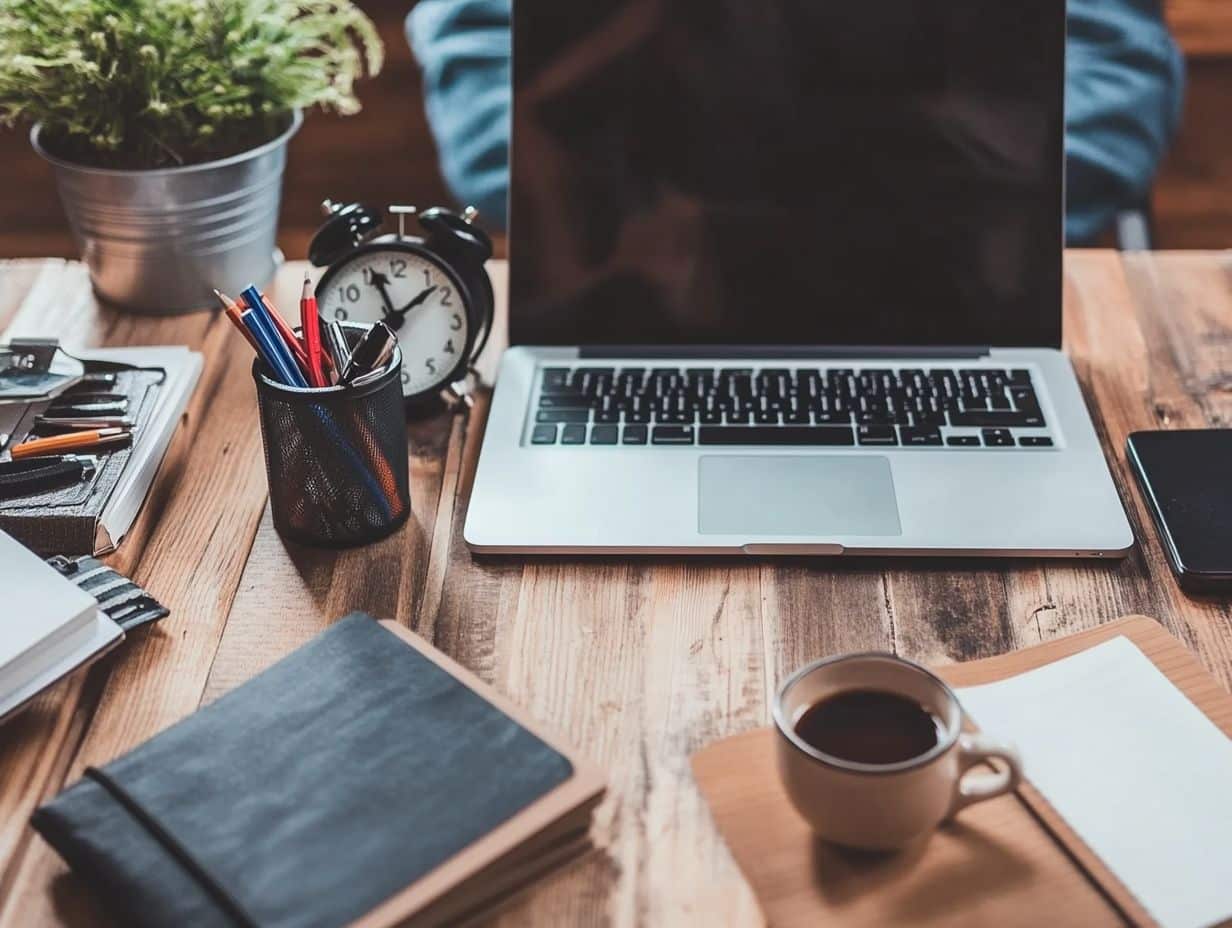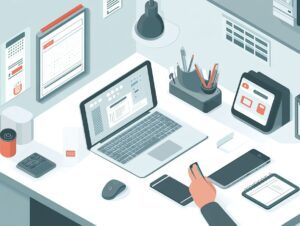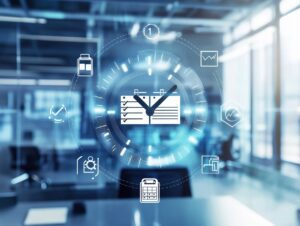I know that mastering productivity is crucial for my personal and professional success. The first step for me in How To Work Faster is identifying those pesky time-wasting habits so I can work faster and more efficiently.
This article dives into the common pitfalls that can slow me down and shares some practical strategies for overcoming them. From effective time management techniques to streamlining my processes, I m learning how to eliminate distractions and keep a focused mindset.
Plus, I ll discover how to measure my progress to ensure I’m continuously improving. It s time for me to unlock my full potential!
Why is it Important?

I find it really important to understand how productivity plays a role in my daily life if I want to hit my personal and professional goals. Productivity isn’t just about cranking out more tasks; it’s about making the most of my time, managing it better, and making sure my efforts align with my bigger objectives.
By putting some thought into effective goal setting and weaving mindfulness into my routine, I can boost my performance and feel more satisfied with my work. When I prioritize productivity, I’m actually setting up a system for continuous improvement that helps me and contributes to a positive vibe in the workplace.
Identifying Time-Wasting Habits
Identifying my time-wasting habits has been a game changer for boosting my productivity. We all have those patterns that slow us down whether it s juggling too many tasks at once, being disorganized, or getting sidetracked by distractions.
By taking a good look at myself, I can pinpoint these habits and figure out how to break free from them. This self-assessment not only clears up my workflow optimization but also helps me develop better work habits that create a more productive environment for myself.
Common Habits that Slow Down Productivity
I ve noticed that several common habits can really slow down productivity, so it s important for me to recognize and tackle them in my daily routine.
In this fast-paced world, it s easy to get caught in cycles of inefficiency that just drain my time and energy. Take procrastination, for example it doesn t just push important tasks to the back burner; it also ramps up my anxiety as deadlines sneak up on me. And then there s multitasking. It sounds great in theory, but I often find that it fragments my focus and ends up lowering the quality of my work. Distractions, whether they re mobile notifications or spontaneous chats with friends, can throw me off course even when I m trying my hardest.
When I dig into the psychology behind these habits, I realize there are underlying fears and distractions that keep them alive. To tackle these issues, I find that establishing a structured schedule, setting clear priorities, and practicing mindfulness really helps boost my concentration and fosters a more productive lifestyle.
Strategies for Working Faster
I ve found that implementing effective strategies to work faster can really boost my productivity and efficiency in daily tasks. By using proper task management techniques and efficiency tools, I can streamline my workflow and keep my efforts focused on my goals.
Incorporating time management methods, like time blocking and delegation, helps me maximize my output without sacrificing quality. It s amazing how the right strategies not only enhance my performance but also help me maintain a healthier work-life balance and promote overall motivation.
Time Management Techniques
Adopting effective time management techniques has become essential for me to optimize productivity and hit those deadlines. When I implement these strategies, I not only boost my own performance but also create a more collaborative vibe within my teams.
For instance, I’ve found that using time blocking really helps. It allows me to set aside dedicated periods for deep work, making it so much easier to tackle those complex projects without interruptions. I also rely on a prioritization matrix to visualize what tasks are urgent and important, which helps me focus on what truly matters and enhances my decision making.
By combining these methods, I can navigate daily challenges more efficiently, leading to better results and a more balanced work-life dynamic.
Effective Multitasking

I ve realized that while multitasking is often seen as a superpower, it can actually mess with my focus and make my brain feel overloaded if I m not careful. Knowing when and how to multitask can really boost my efficiency. For example, task batching grouping similar tasks together helps me concentrate better and cuts down on the mental fatigue that comes from constantly switching gears. By being strategic with how I multitask, I can get better results without sacrificing quality.
Navigating the multitasking maze calls for a thoughtful approach. It s not just about cramming in more tasks at once; it s about figuring out which tasks go well together and can be handled simultaneously without throwing me off balance. For instance, I can respond to emails while enjoying some background music without much trouble, but bouncing between unrelated projects just leaves me feeling confused and adds to my cognitive load.
I ve found that taking regular breaks in between tasks keeps my mind clear and actually boosts my productivity.
Using focused time blocks for uninterrupted work sessions has really paid off too. It helps me produce better results and makes juggling multiple responsibilities feel a lot less overwhelming.
Improving Efficiency
Improving efficiency at work is super important for hitting high performance and creating a culture of continuous improvement. When I focus on optimizing workflows and implementing process improvement strategies, I can spot bottlenecks and really boost productivity.
Using performance metrics helps me measure my progress effectively, and I find that regular feedback keeps me on the right track. This all-in approach to managing resources not only ramps up productivity but also encourages team engagement and accountability while fostering a culture of innovation.
Streamlining Processes and Systems
Streamlining processes and systems is a game changer for optimizing workflow and boosting productivity at every level of my organization. By embracing automation and weaving technology into what we do, I can really amp up efficiency and cut down on mistakes.
Adopting an agile mindset helps my teams adapt quickly to changes, ensuring we re always laser-focused on delivering the best results and practicing adaptability. Plus, continuous process improvement is key to keeping that competitive edge in today s fast-paced work world.
This approach not only nurtures a culture of innovation but also encourages collaboration among team members, allowing everyone to share their unique insights. Implementing digital tools that enable real-time communication and project management can seriously reduce bottlenecks and improve transparency.
And when I leverage data analytics, I can spot inefficiencies and develop targeted strategies for improvement.
In short, blending technology with agile practices creates a dynamically framework where responsiveness to market demands and optimization become second nature in the organization.
Eliminating Distractions
Eliminating distractions is key for me when it comes to enhancing focus and boosting productivity in my work environment. Whether it s cutting down on digital distractions or setting up a workspace that actually helps me concentrate, the choices I make can really influence my ability to stay on task.
I love using focus techniques like the Pomodoro Technique or time blocking; they’re great for keeping distractions at bay and optimizing my energy. For more strategies, check out these tips for getting work done fast. By holding myself accountable, I can foster a culture that values sustained attention and productivity.
To really amp up my concentration, I ve found it helpful to set clear boundaries around tech use. For instance, I turn off non-essential notifications and pick specific times to check my emails. Creating a tidy and organized workspace is also crucial for me it cuts down on environmental distractions and lets my mind hone in on what I need to get done while enhancing my organization.
I also make sure to take regular breaks to recharge my mental energy. This not only helps prevent burnout but also keeps me disciplined. Ultimately, combining these strategies helps me strike a balance between efficiency and well-being, ensuring I stay productively engaged.
Maintaining a Productive Mindset
Maintaining a productive mindset is key for me when it comes to reaching my goals and keeping my motivation alive, whether in my personal life or at work. I ve found that incorporating mindfulness techniques into my daily routine really helps boost my focus and gives me a better awareness of my work habits.
This kind of self-discipline keeps me committed to my objectives and helps me push through challenges, leading to a more productive and fulfilling work life overall while enhancing my personal development.
Tips for Staying Focused and Motivated

Staying focused and motivated during the workday can be a bit of a challenge, but I’ve found that using some specific techniques really makes a difference. One thing I like to use is the Pomodoro Technique, which helps me break my work into structured intervals with breaks. For more strategies on maximizing productivity, check out these tips and tricks. It’s great for keeping my concentration sharp.
I also try to reflect on my daily routines and align them with my energy levels, which definitely boosts my motivation and overall productivity. By making small tweaks and being mindful of my habits, I can create a more engaging work environment.
To amp up my focus even more, I like to experiment with tools like the Eisenhower Matrix. It helps me prioritize tasks based on urgency and importance. I also find that incorporating some mindfulness exercises into my daily routine sharpens my attention and helps reduce stress. Additionally, I strive to maximize my productivity by recognizing my natural energy patterns throughout the day, allowing me to optimize how I manage my tasks, like tackling the tougher assignments when my energy is peaking.
I also make it a point to regularly set aside time for self-reflection. It helps me figure out what techniques work best for me and allows me to adjust my strategies. This way, I keep my motivation high, even when challenges come my way.
Measuring and Tracking Progress
Measuring and tracking my progress is crucial for understanding my productivity and figuring out what adjustments I need to make to boost my efficiency. Using performance metrics helps me quantify what I ve achieved and spot areas where I can improve.
I ve found that employing time-tracking tools gives me valuable insights into my work habits, which helps me refine my strategies for continuous improvement. By creating feedback loops, I can make sure I stay aligned with my goals and really foster a culture of accountability.
Tools and Methods for Monitoring Efficiency
Using the right tools and methods to keep an eye on efficiency has really helped me boost productivity and streamline my workflows. Efficiency tools, like project management software and time tracking apps, let me visualize my tasks and check out performance metrics easily.
When I integrate technology into my daily routine, it not only keeps me accountable but also gives me insights that can shape my future strategies for improvement.
Project management software is a game changer it lets me create timelines, assign tasks, and track progress, which makes collaboration so much smoother and keeps everyone in the loop throughout the project. On top of that, time tracking apps help me log the hours I spend on different tasks. This way, I can see exactly where my time goes and pinpoint any bottlenecks.
By leveraging these tech tools, I can maintain clear communication with my team and make sure we’re all aligned with our project goals. Bringing these tools into our workflows fosters a culture of accountability and continuous improvement, laying the groundwork for ongoing success.
Frequently Asked Questions
1. How can I improve my productivity and work faster?
To work faster and more efficiently, you can try breaking down larger tasks into smaller ones, prioritizing your to-do list, setting specific goals and deadlines, and minimizing distractions.
2. What are some helpful tools or techniques for working faster?

Some helpful tools and techniques for working faster include time management apps, the Pomodoro technique, automation tools, and delegating tasks to others.
3. How can I stay focused and avoid wasting time?
To stay focused and avoid wasting time, you can try eliminating unnecessary tasks or meetings, taking short breaks throughout the day, and creating a designated workspace with minimal distractions.
4. What are some tips for improving my efficiency at work?
To improve your efficiency at work, you can try using templates or standardized processes, avoiding multitasking, and regularly reviewing and optimizing your workflow.
5. How can I manage my time better to work faster?
To manage your time better and work faster, you can try using a time tracking tool, setting aside dedicated blocks of time for specific tasks, and learning to say no to non-essential tasks or requests.
6. What are some ways to increase my motivation and energy at work?
To increase your motivation and energy at work, you can try incorporating physical activity or movement breaks, practicing good self-care habits, and setting achievable and rewarding goals for yourself.






